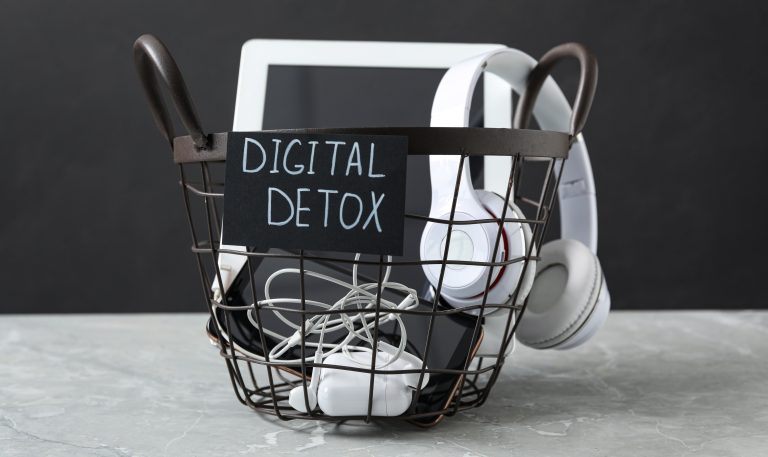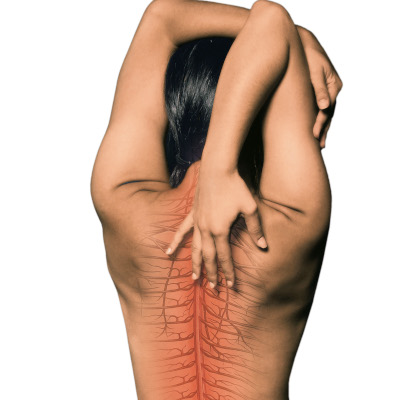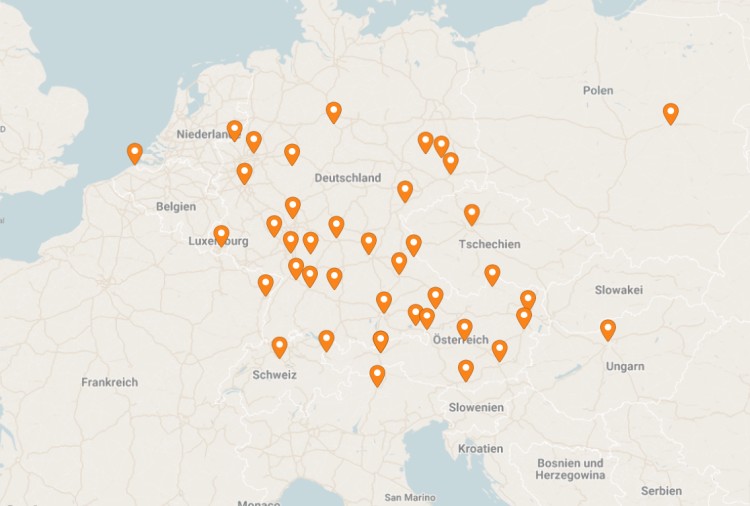Digital detox tips: simply switch off and be offline
Take your physical battery level as important as that of your smartphone!
The world keeps turning even without a smartphone! People spend an average of nine years of their lives staring at their smartphones. (04.01.2021 Source Internet)
Honestly: What would a dying person say to that? What a waste of time! Is humanity just letting real life be stolen from it? Is it defenselessly at the mercy of the programmers in the fight for every second and every click? "Digital Detox " - digital detoxification - is the name of the countermovement. Many want to go into reverse, to be analog again, at least more often.
Talking to people, sensually perceiving the surroundings. There are digital detox vacation offers, i.e. vacations without smartphones - but afterwards, many people continue as before. If you want to reduce digital use in everyday life, you have to tackle a bigger problem: Change habits!
"Every error recognized is a step forward."

Here are a few Digital Detox tips:
- Outsource services: A smartphone is a practical alarm clock, it also tells you how much time is left until the alarm goes off in the morning. If you tend to only briefly check what's going on on social media after setting the alarm and then realize that your bedtime is 45 minutes shorter, there's a solution: buy an alarm clock that does nothing but wake you up. Then there's no need to look at the display before going to sleep. You can outsource other functions. Use a wristwatch for the time.
- Fewer apps: Practically all apps include push messages. If someone writes a message, if a bomb explodes somewhere, if someone likes an Instagram entry - the app is constantly vibrating, ringing and lighting up. If you can't manage to avoid curiosity when you should be doing something else, you have several options: Put the smartphone on silent. Turn off push messages. Uninstall apps
- Digital detox apps: Curiously, there are apps that are supposed to help limit cell phone use. Quality Time, Mental or Time Out record how often users activate their smartphones and what they do with them. At the end of the day comes the balance sheet. The apps are a means of self-knowledge. And that is also the first step toward digital detox.
- Social norms: When people slip into digital stress as a result of using their smartphones, social reasons are usually a decisive factor. The feeling that one has to answer e-mails, short messages, etc. immediately.
- Smartphone-free time: Once social pressure has been tamed, the smartphone can disappear from the environment for phases. In the LMU Munich survey, 85 percent of users said they always have their smartphone to hand. About a quarter carry it on their person almost around the clock. Anyone who then suddenly goes to the supermarket or a restaurant without their device first feels naked. It's a huge insecurity not to have the opportunity to at least look at the display at any time. For people who suffer from constant accessibility, however, it has a liberating effect after a while. Because after you hold it in your hand again, it becomes clear: The world really does keep turning. And even if a message came in, it could easily wait to be read and answered.
- Smartphone-free rooms: The next step is to create smartphone-free areas at home. The bedroom is a good place to start. Or the dining table - what could be more annoying and rude than constantly staring at your cell phone at the dining table? This is especially disturbing for children. In the book "Jetzt pack doch mal das Handy weg," author Thomas Feibel describes quite wonderfully how much children are sometimes annoyed by their parents when they are constantly absorbed by their smartphones. Role models, my ass!
- Flight mode, switch off: If you just can't keep your hands off your smartphone, you can certainly trick yourself and create an additional hurdle by cutting off the connection to the Internet. If the cell phone is in flight mode, you have to tap around on the smartphone a lot more to check what the social media world looks like. The inhibition threshold is then often too high, so it disappears back into the pocket. Even harder on oneself is who realizes that there are actually buttons that turn off a smartphone. In the end, people may manage to regulate the use of their exceedingly practical smartphone in such a way that it doesn't make them unhappy. Or at least that they don't endanger themselves or others when using it. Most recently, the German Federal Ministry of Transport's "Get off the Gas" campaign lamented: "Distracted driving, especially by cell phones, can be life-threatening According to a survey, 36 percent of road users have already been in a dangerous situation due to smartphone use - and seven percent have even been involved in an accident.
A wonderful retreat for a cell phone-free time-out is to go to the Physiotherm infrared cabin and simply switch off.
The cell phone-free zone in the Physiotherm cabin can be optimally used for this purpose.
Our brain cannot do 2 things at the same time
When we develop our senses (sight, smell, hearing, taste, touch) we cannot brood at the same time.
Enjoy in the Physiotherm infrared cabin:
Aromas, colored light, sunlight and music in combination with the unique Sensocare infrared technology.
The beginning of autumn with its shorter days and cooler temperatures invites us to linger for a sensory experience.
Text: Nina Lorenz - Physiotherm Coordination Sales international and certified mental and business mental coach and nature therapist
Physiotherm advice
We will help you choose the right infrared heat - because it's all about your HEALTH!
We will answer all your questions. Find out more about the model selection, mode of action and options in a short, non-binding consultation with our experts.





